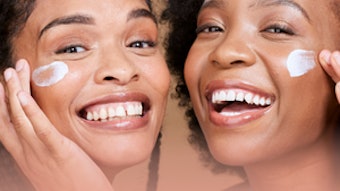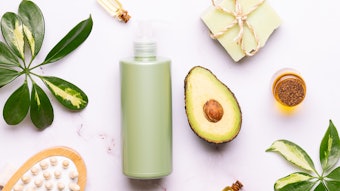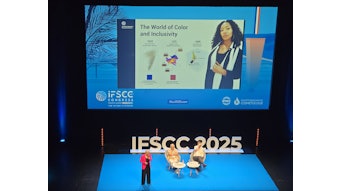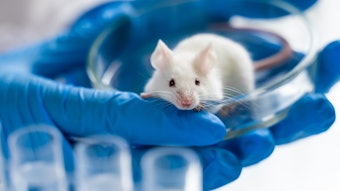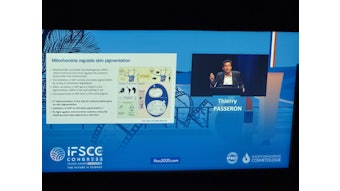
The fourth quarter of 2024 was jam-packed with ideas to spark beauty innovation. Concepts emerged from the IFSCC Congress, C&T Allē Awards finalists, In-cosmetics Asia and SCC Annual Scientific Meeting and Technology Showcase, to name just a few. From new biological targets, technological proposals, testing approaches and biological insights, to re-invention through material science, here are our top 14 macro trends in beauty innovation for 2025 and beyond. Some are newly emerging; others continue drawing interest. We've also included brief notes and buzzwords (italicized throughout) from our observations.
Log in to view the full article
The fourth quarter of 2024 was jam-packed with ideas to spark beauty innovation. Concepts emerged from the IFSCC Congress, C&T Allē Awards finalists, In-cosmetics Asia and SCC Annual Scientific Meeting and Technology Showcase, to name just a few. From new biological targets, technological proposals, testing approaches and biological insights, to re-invention through material science, here are our top 14 macro trends in beauty innovation for 2025 and beyond. Some are newly emerging; others continue drawing interest. We've also included brief notes and buzzwords (italicized throughout) from our observations.
1. Cell Membranes and Skin Barrier
- strengthening cell membranes to reduce water loss, improve skin/barrier health
- osmolytes, betaine, aquaporins, taurine and lecithin to boost the barrier
- targeting glycosylation on cell surfaces to reverse aging/effects on hallmarks
- barrier defects/leaky skin
2. Physics Applied, Adaptable Technologies
- ultrafine bubbles to act as surfactants
- ultrafine bubbles to act as carriers
- smart pigments that absorb damaging blue light energy and transfer it to white light for well aging (targeting opsins)
- methoxyphenylethenyl t-butylbenzoate (MPEBB) photochemical precursor that, when exposed to UVB, becomes a UVA absorber
- osmolality (especially for lubrication in intimate care)
- osmolality related to skin water content, health (noted above)
- targeting cell surface glycosylation (also noted above)
3. Aging Hallmarks, Longevity, Mini Proteins
- a study of supercentenarians found over-expressed genes (SIRT6 and FOX03 specifically, which relate to autophagy and several aging hallmarks)
- targeting said genes with a berry extract for improved radiance
- proteins, peptides, amino acids and mini proteins (we're especially watching mini proteins, which are reportedly highly effective and drawing interest)
- the hypodermis as an overlooked aging target
- bioactive to target stem cells in the aforementioned hypodermis
- hyperpigmentation still an issue, new ideas sought; melano-aging a new concept
- ways to impart lasting hydration
- plumping effects, hyaluronic acid
- porphyr-aging — another new term; relates to porphyrins produced by skin microbiota that can positively or negatively affect skin
- examining post-menopausal skin
- mixed retinol to improve efficacy, reduce irritation
- low oxygenation detrimental to skin
4. Beauty for Health Benefits
- reducing mental stress (which produces cortisol, negative impacts stress); related: "cultural stress"
- neuroceuticals (foods) to ease stress
- focus on water for skin health
- mood and beauty, dopamine to improve skin
- food-inspired concepts (Pantone's Mocha Mousse 2025 color of the year is a perfect example)
- Food for thought: Should we as an industry better promote the health benefits of using cosmetics?
5. Intimate and Whole-body Care, Sexual Wellness
- intimate care and wellness for sensitive skin health, vaginal microbiome balance
- intimate care extended to anal care and health (*maybe we missed it, but we have yet to see a focus on penile or scrotum care)
- vaginal skin equivalent models for testing
- skin care actives for vaginal area
- whole-body malodor testing and cleansing; developing whole-body deodorant
6. Post-procedural, OTC/derm-level Care
- healing formulas and ingredients for use after microneedling
- OTC-level skin care treatments, high efficacy
- at-home devices still of interest
7. Delivery Variables and Systems
- exosomes — consumers are reportedly interested in them, too (based on social media buzz)
- consumers are also interested in encapsulates to improve delivery and efficacy
- encapsulating retinol for stability, safety
- encapsulating sunscreens to reduce penetration
- nano-phytosomes
- photosensitive liposomes
- heat found to increase sunscreen penetration
- pollution found to enable larger protein penetration (which can be good or bad)
8. Optimizing and Rethinking Sunscreens
- improving dispersion
- reducing penetration (mentioned above)
- boosting SPF
- delving deeper into "reef safe" truths
- understanding how heat increases sunscreen penetration
- exploring adaptable UV protection
9. Textured Hair, Hair Styling/Coloring and Scalp Care
- exploring the scalp microbiome
- understanding textured hair surface properties
- testing textured hair style maintenance and curl shrinkage
- ethnic hair aging
- frizz management (not "anti-frizz")
- anti-hair loss
- sensitive scalp
- new approaches to coloring; e.g., eumelanin precursor
10. DEI Focus, Inclusive Research
- diversity, equity and inclusion (DEI) more openly discussed
- building brands for under-served minorities, including LGBTQ+, trans-men and women and others
- skin and hair research is becoming more inclusive and diverse
- makeup for drag performers
- research on textured hair properties and care
- research on scalp microbiome in textured hair
- accessibility in terms of packaging for upper extremity-impaired consumers
11. Sustainability Expected, Nature Provides
- search continues for novel marine-derived ingredients, ferments
- fermentation and biotech driving sustainability
- efforts to reinvent industry "darlings" (e.g., retinol) via bacteria
- focus on biodiversity
- leveraging plants as biofactories
- improving green chemistry
- building sustainability business plans in consideration of planetary boundaries/eco-design
- upcycling continues
- regenerative agriculture and precision farming of interest
12. Microbiome Still Drawing Interest
- skin probiotics of interest
- mycobiome (fungal microbiome)
- manipulating skin microbiome bacteria for desired outputs
- crosstalk between microbes and skin
13. Applying AI to Product Development
- using it to model formula iterations
- using it for biomarker discovery
- using it for peptide discovery
- employing it for microbiome research/targeting
14. Scientific Communication (Sci-Comm)
- a role all stakeholders can hold
- needed to build consumer trust
- should align with marketing to roll new products out with full data backing (before the trend passes)
- ideally proactively unravels misinformation
- can educate the consumer; social media shapes the industry as companies react to consumer beliefs
- would be stronger if sci-commers came together more as a united front (they are very scattered)
- should defend safe ingredients (even if the brand chooses to omit them due to consumer preference)
Honorable Mentions
In addition to the emerging directions in beauty innovation listed above, several honorable mentions of areas of focus for cosmetic product development are worth noting. These include:
- improving sensory/aesthetic properties
- reducing skin irritation
- improving consumer perception
- re-examining water (as mentioned above, ultrafine bubbles for delivery and cleansing)
- reducing inflammation, inflammaging
- addressing sensitivity
- implementing lipids, proteins, antioxidants (many from new sources; e.g., a novel C. acnes-secreted antioxidant: RoxP)
- multifunctional preservation
- a closer look at the methylome
- precision everything (from fermentation to targeted care)
- designing test models (e.g., cell cultures as animal alternatives for skin care research; vaginal model for intimate care research; etc.)
- pet care
- efficacy, efficacy, efficacy.
We're looking forward to the New Year, where these concepts and directions for product development will begin to take shape. Follow along with us!

